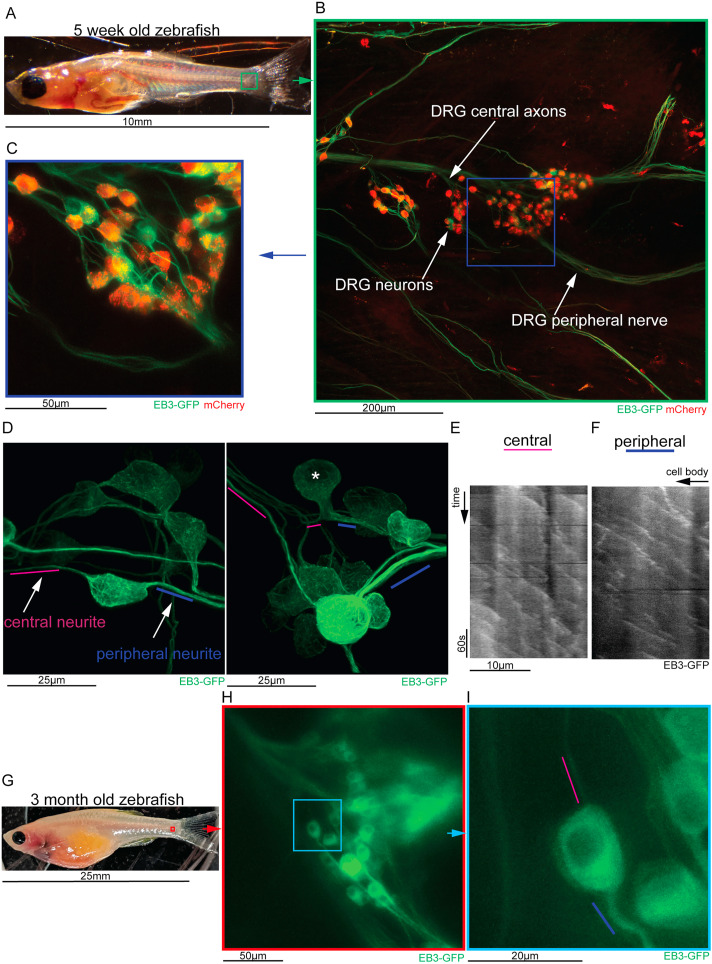Fig. 3
Fig. 3. Most zebrafish DRG neurons retain bipolar morphology throughout development. A. Brightfield overview of 5 week old casper zebrafish. B. Confocal image of the posterior region of the zebrafish spine showing the spinal cord, DRG neurons and their nerves. C. higher magnification image showing DRG neurons cell bodies and their centrally and peripherally projecting neurites. D. Airyscan super-resolution images of DRG neurons expressing EB3-GFP, showing clear centrally and peripherally projecting neurites originating from separate locations on the cell body marked pink and blue respectively. Asterisk indicates rare neuron with a cell body projection from which both neurites emerge. E.F. Representative kymographs from the centrally and peripherally projecting neurites respectively of 5-week-old zebrafish DRG neurons expressing EB3-GFP G. Brightfield overview of 3 month old zebrafish. H. 2 photon image of the posterior DRG cluster of a 3 month old zebrafish expressing EB3-GFP I. Higher magnification image of a DRG neuron at the edge of the cluster. Central and peripheral neurites are indicated with pink and blue lines respectively.
Reprinted from Developmental Biology, 478, Shorey, M., Rao, K., Stone, M.C., Mattie, F.J., Sagasti, A., Rolls, M.M., Microtubule organization of vertebrate sensory neurons in vivo, 1-12, Copyright (2021) with permission from Elsevier. Full text @ Dev. Biol.

